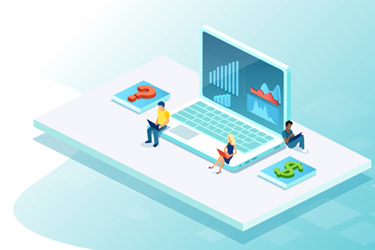Today's Hybrid Approach To Software Monetization And Deployment
By Michael Goff, Revenera

Software suppliers are continuing their work to improve how customers engage with their products. The goals: to solidify customer satisfaction and retention, while helping strengthen revenue recognition for the supplier. Achieving these requires an effective strategy that considers both software monetization (how the customer pays for the software) and software deployment (how the software is delivered to customers), with clear and actionable insights about both.
The Revenera Monetization Monitor: Software Monetization Models and Strategies 2022, the first of this year’s reports in an annual series, draws on findings from a survey of 261 respondents to analyze software producers’ approaches to pricing, usage, business models, and transparency. The present report illustrates trends, notably that today’s hybridized approach to monetization and deployment requires software suppliers to support multiple offerings. Four main takeaways from the report include:
1. Software suppliers continue to rely on a mix of monetization and deployment models.
As it relates to software, “hybrid” may refer to the use of a combination of deployment models or a mix of monetization models:
- Monetization models: perpetual, subscription, consumption, metered, and outcome- or usage-based.
- Deployment models: embedded, on-premises, public and private cloud, and software-as-a-service (SaaS).
Subscription/term monetization and SaaS deployments are showing the greatest planned growth in the coming 12–18 months. During this time, 54% of respondents anticipate that subscription/term monetization will grow as a percentage of overall software license revenue; also showing strong growth is consumption-based monetization, with 41% of respondents anticipating that it will grow as a percentage of overall software license revenue. At the same time, 59% of respondents anticipate that SaaS deployments will grow as a percentage of overall software license revenue in the coming 12–18 months. While SaaS has demonstrated its growing popularity, more traditional deployments also remain relevant, with 25% of respondents anticipating that on-premises deployments will grow during this time.
While this is the fourth year that the research has shown strong trends toward subscription monetization and SaaS deployments, it is important to note that suppliers continue to rely on a mix of models. Software companies rely on hybrid approaches, delivering products with monetization and deployment models that meet the evolving needs and preferences of their customers. Where the most-used deployment model is SaaS, public cloud, or private cloud, the most popular monetization model is subscription/term; where the most-used deployment model is on-premises or embedded, the most popular monetization model is perpetual.
2. Securing recurring revenue is a top goal.
The top driver of change, among those who recently changed their monetization model, is to implement a recurring revenue model, as reported by 52% of respondents, while 48% of respondents have plans to implement a recurring revenue model.
Perhaps because many respondents have already moved toward recurring revenue, planned changes focus on how to grow new revenue and how to eliminate revenue leakage. With economic uncertainties ahead, today’s top drivers of planned change include entering new vertical markets (reported by 65%) and moving to an “as-a-service” offering (reported by 64%).
3. Clear insights into usage are required to price products accurately.
To secure recurring revenue, through approaches such as subscriptions, software suppliers must have clarity about how their products are being used. Usage data can inform software pricing; decisions about software versions, feature prioritization, and roadmap decisions; piracy tracking, and more.
Though it can help a wide range of teams (e.g., product management, software engineering, customer success, and sales), only 26% of respondents indicate that their organization can currently gather product usage data “very well.” Another 35% “currently can do some of this but it requires manual processes or engineering work” and a growing number of respondents (18%—double the 9% reported in 2021) have plans to gather product usage data in the coming two years.
Similarly, relatively few (32%) respondents feel that the value they deliver to customers is “totally aligned” with the price that they charge. Both the ability to gather product usage data and the ability to align price and value are essential for software producers to support revenue goals, particularly as interest in consumption-based monetization models grows.
4. Monetization strategies are changing.
Software suppliers are changing their monetization strategies for several reasons, each highlighting the importance of usage data. Top reasons for changes that are planned in the coming 12–18 months include “better support pricing and packaging changes” (35%), “add/improve automated enforcement” (32%), “add new pricing meters” (30%), “provide temporary evaluation/try-before-you-buy” (28%), and “move to user-based licensing” (28%).
Software usage data collection practices are maturing, providing insights that drive decisions about new models. Over the past year, reliance on manual interventions dropped by nearly 10 percentage points (44% in 2021 to 35% in 2022), indicating progress away from time-consuming processes.
With these encouraging trends and the implementation of new models, the use of entitlement management systems becomes increasingly important for software producers. Properly leveraged, entitlement management systems can provide the flexibility to support hybrid monetization and deployment models while delivering usage data for continuous improvement in the face of challenging economic times ahead.
About The Author
Michael Goff is principal, product marketing at Revenera, focused on software monetization and usage analytics solutions.
